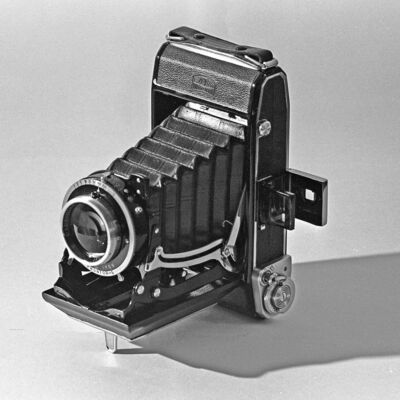Settings for shooting eclipse?
Mar 29, 2024 14:28:43 #
Anyone plan to shoot the upcoming eclipse? (Only) if you’ve done this before, what camera settings & lens considerations do you recommend.
Mar 29, 2024 17:43:23 #
Mar 29, 2024 18:35:34 #
Mar 29, 2024 18:40:27 #
Bill Petesta wrote:
Anyone plan to shoot the upcoming eclipse? (Only) if you’ve done this before, what camera settings & lens considerations do you recommend.
Both Google and YouTube have lots of information. Enter "how to take pictures of solar eclipse"
Mar 30, 2024 11:00:07 #
DRM
Loc: NC
Bill Petesta wrote:
Anyone plan to shoot the upcoming eclipse? (Only) if you’ve done this before, what camera settings & lens considerations do you recommend.
As noted by others on UHH, there's lots of information both here and elsewhere on the web. You'll see numerous different suggestions. As with most things photographical, particularly when shooting an extremely distant object, many roughly equivalent combinations of aperture, shutter, and ISO will yield essentially the same results.
But to directly answer your question, during the 2017 eclipse, shooting at 700mm focal length, settings on the images I deemed best were:
- partial phases: f/8, 1/250, ISO 100
- diamond rings: f/8, 1/60, ISO 100
- totality: f/8, 1/30 and 1/125 blended, ISO 100
I also processed and blended a number of images to show earhshine at totality. I don't remember the complete range of shutter speeds involved in that sequence. If you have any interest in viewing results from those settings, check the "skyscapes" gallery at www.drexmillerphotography.com.
Mar 30, 2024 17:06:12 #
ISO somewhere around 800, Set on A, f 5.6 or 8 --just check your image on the back of your camera to be sure you are getting what you want - of course with a solar filter till totality
Mar 30, 2024 17:11:56 #
DRM wrote:
As noted by others on UHH, there's lots of informa... (show quote)
I would assume this is with an ISO certified solar filter.
Mar 30, 2024 19:22:44 #
DRM
Loc: NC
Jack 13088 wrote:
I would assume this is with an ISO certified solar filter.
Of course. Except during totality. Specifically, an Orion glass solar filter.
Mar 30, 2024 20:41:10 #
For the partial phase, I'm shooting a bracketed series set at 0.7EV5. My camera settings are f11.0 @1/250 sec, ISO100. This works out to five shots at 1/90, 1/200, 1/250, 1/350 and 1/750 sec. Note that I have two camera set-ups, a Sony a6000, 18-135mm lens (set at 30mm) that use an intervalometer that will take five image every 10 minutes, to capture a three-hour sequence, which I did at the October annular eclipse. My second set-up which I took random shots, is a Sony a6500, 400mm lens. For when shootings the actual total eclipse, the last time in 2017 I shot at f11.0 @ 1/10 sec, ISO 400, but it was a cloudy day and while the images were interesting and very pleasing, the corona was not as bright as it would have been if the skies were clear.
To see my images from August 2017 total eclipse go to:
https://www.uglyhedgehog.com/t-785225-1.html
For the October 2023 annular eclipse, please go to:
https://www.uglyhedgehog.com/t-785225-4.html
Note that I'm moving my mid speed on the five-shot sequence from 1/125 sec to 1/250 sec.
To see my images from August 2017 total eclipse go to:
https://www.uglyhedgehog.com/t-785225-1.html
For the October 2023 annular eclipse, please go to:
https://www.uglyhedgehog.com/t-785225-4.html
Note that I'm moving my mid speed on the five-shot sequence from 1/125 sec to 1/250 sec.
Mar 30, 2024 23:38:53 #
custodian
Loc: New York
DREXMILLERPHOTOGRAPHY. YOUR PICTURES ON THT SITE ARE AMAZING!! I WOULD LOVE TO BE ABLE TO TAKE PICTURES LIKE THOSE
Mar 30, 2024 23:46:29 #
DRM
Loc: NC
custodian wrote:
DREXMILLERPHOTOGRAPHY. YOUR PICTURES ON THT SITE ARE AMAZING!! I WOULD LOVE TO BE ABLE TO TAKE PICTURES LIKE THOSE
Thank you very much! I really appreciate those kind words!
If you want to reply, then register here. Registration is free and your account is created instantly, so you can post right away.




